
You want a low price on generic Cymbalta without getting burned by sketchy sites. That’s doable. The sweet spot is finding a licensed pharmacy, using a couple of price tricks, and knowing exactly what you’re buying. Expect real savings (often under $10-$20 per month in the U.S. as of 2025), but don’t expect “no prescription” deals to be safe or legal. Keep your guard up, stick to approved generics, and tap telehealth if you need a valid script.
Quick promise: I’ll show you how to buy generic Cymbalta online safely at the lowest fair price, what to check before you order, and how to dodge common traps (like no‑RX sites, counterfeit stock, and surprise shipping fees). I’ll also flag risks, interactions, and a few alternative meds in case duloxetine isn’t the best fit for you or your budget.
How to get the lowest safe price online (without sketchy shortcuts)
Here’s the clean, step‑by‑step way to get legit duloxetine for less.
- Confirm the med and why you need it. Generic Cymbalta is duloxetine, an SNRI approved in many countries for major depressive disorder, generalized anxiety disorder, diabetic peripheral neuropathy, fibromyalgia, and chronic musculoskeletal pain. If you’re switching from brand Cymbalta, your prescriber can confirm the exact strength and dosing schedule.
- Secure a valid prescription. In the U.S., U.K., EU, Canada, and Australia, duloxetine is prescription‑only. If you don’t have a recent script, book a telehealth visit. Most online pharmacy platforms can connect you with licensed clinicians; typical consults run $0-$75 depending on insurance.
- Choose a licensed online pharmacy, not a “no‑RX” site. In the U.S., look for NABP’s Verified Pharmacy Program (often shown as VPP or a .pharmacy domain) and cross‑check the business on FDA’s BeSafeRx. In the U.K., confirm registration with the GPhC. In the EU, look for the EU common logo and check the national register (e.g., MHRA). In Canada, use CIPA‑certified pharmacies. In Australia, check TGA listings. If a site ships prescription meds without verifying your RX, skip it.
- Compare total cost, not just the sticker price. Price the exact dose, quantity, and manufacturer. Add shipping, dispensing fees, and any telehealth charge. Check if a 90‑day supply is cheaper per capsule than a 30‑day fill. Many mail‑order options cut per‑pill cost by 15-40% for 90‑day fills.
- Try both cash and insurance routes. Duloxetine is a low‑cost generic in 2025. Cash prices at discount pharmacies can beat many insurance copays. If you have insurance, test both paths in the cart before you commit.
- Stack legitimate discounts. Use pharmacy coupons, price‑match policies, or member savings. These often bring 60 mg down to well under $0.60 per capsule at larger retailers-and sometimes under $0.25 with the right coupon and quantity.
- Pick the right strength to avoid paying more than you should. Common duloxetine delayed‑release capsule strengths: 20 mg, 30 mg, 40 mg, 60 mg. Pricing quirks happen: sometimes two 30 mg caps cost more (or less) than one 60 mg cap. Price both before ordering. Don’t split or crush capsules.
- Choose a reputable manufacturer. Well‑known generic makers include Teva, Lupin, Aurobindo, Dr. Reddy’s, Sun Pharma, and others. If you’ve tolerated one brand well, ask the pharmacy to keep that manufacturer for refills.
- Review shipping and returns. Duloxetine doesn’t need cold‑chain shipping. Standard delivery is usually 3-7 business days, expedited 1-3. Make sure the pharmacy has a clear return or replacement policy if the package goes missing or arrives damaged.
- Keep records. Save your order confirmation, lot number, and expiration date. If anything looks off-odd capsule imprint, damaged blister seals-contact the pharmacy before you take the medication.
Red flags to avoid: no prescription required, no clear physical address or license details, aggressive spammy emails, prices that look “too good to be true,” and capsules with sloppy packaging or missing leaflets.
Why all the fuss? Counterfeit meds can be under‑dosed, over‑dosed, or contaminated. Regulators like the U.S. FDA, EMA (EU), MHRA (U.K.), TGA (Australia), and Health Canada set quality bars for approved generics. Stick with pharmacies that play by those rules.
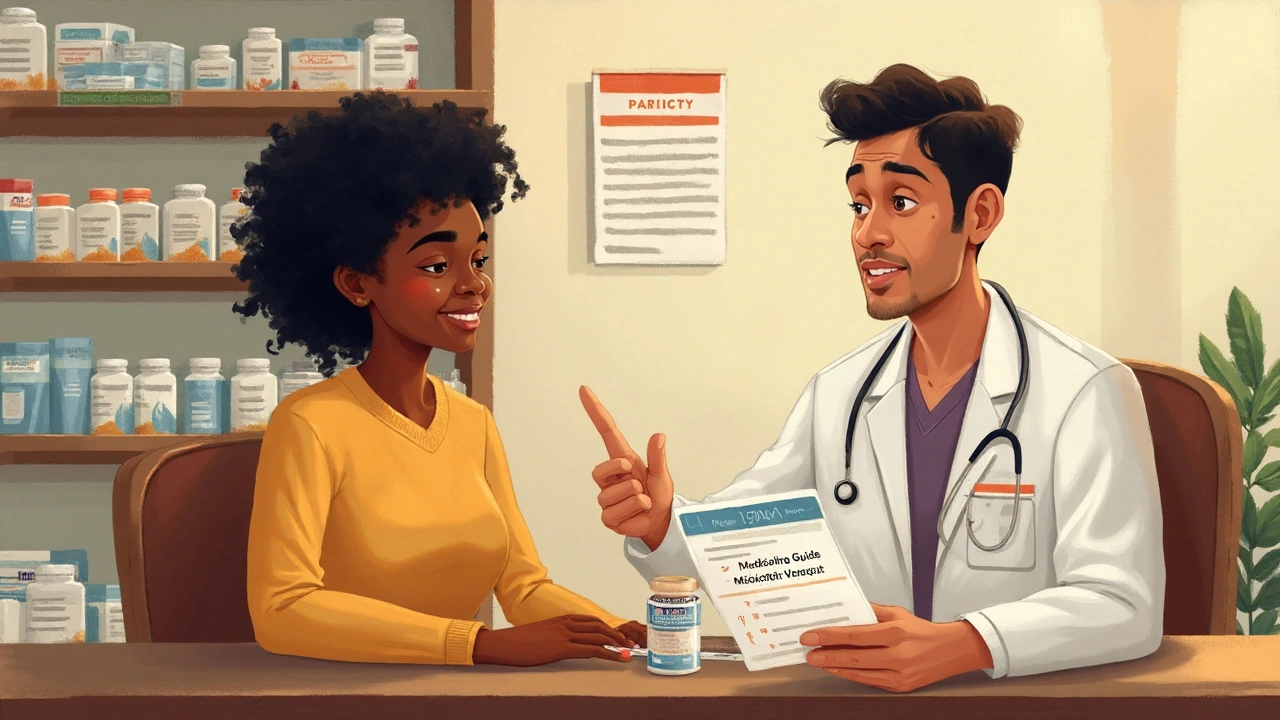
Pricing, specs, and what to check before you order
Here’s what most buyers actually pay in 2025, plus the fine print that affects your final cost. These are U.S. cash price ballparks from common mail‑order chains and discount programs. Your local and international prices may differ.
| Item | Typical 2025 range | Notes |
|---|---|---|
| Duloxetine 20 mg (DR cap) | $0.12-$0.40 per capsule; ~$4-$12 per 30‑day | Often cheapest strength; sometimes sold out at lowest price tiers. |
| Duloxetine 30 mg (DR cap) | $0.15-$0.50 per capsule; ~$5-$15 per 30‑day | Common starter dose for 1 week before moving to 60 mg. |
| Duloxetine 40 mg (DR cap) | $0.18-$0.55 per capsule; ~$6-$17 per 30‑day | Less widely stocked; prices can be quirky. Compare with 20 mg x2. |
| Duloxetine 60 mg (DR cap) | $0.20-$0.60 per capsule; ~$7-$20 per 30‑day | Most common maintenance dose for many indications. |
| 90‑day supply discount | 10-40% lower per capsule | Varies by pharmacy; check auto‑refill terms and shipping intervals. |
| Shipping (standard) | $0-$6; 3-7 business days | Many programs offer free standard mail for 90‑day fills. |
| Shipping (expedited) | $10-$25; 1-3 business days | Useful if you’re close to running out; not usually reimbursed. |
| Telehealth consult (if needed) | $0-$75 | Insurance may cover. Some platforms waive the fee with a fill. |
Specs that matter:
- Formulation: delayed‑release (DR) capsules. Do not crush, chew, or split. If you have trouble swallowing, ask your pharmacist about safe options; don’t improvise.
- Common strengths: 20 mg, 30 mg, 40 mg, 60 mg. Max approved daily dose is 120 mg in some regions, but going past 60 mg often adds side effects without big gains for many patients.
- Dosing basics (label‑based norms, confirm with your prescriber):
- MDD (adults): often 30 mg daily for 1 week, then 60 mg daily. Some may go to 120 mg.
- GAD: similar to MDD; older adults commonly start at 30 mg.
- DPN, fibromyalgia, chronic musculoskeletal pain: 60 mg daily is common; some start at 30 mg for tolerability.
- Onset: mood symptoms may begin improving in 1-2 weeks; fuller effect can take 4-6+ weeks. Pain relief often starts within 1-2 weeks.
- Storage: room temp, dry, away from kids and pets.
Quality checks on delivery day:
- Capsule imprint and color match the pharmacy’s description.
- Bottle or blister has manufacturer, lot number, and expiration date.
- Leaflet included; pharmacy label lists your name, drug, dose, and directions exactly as prescribed.
- No broken seals, moisture damage, or strange smell.
Legal note on importing: Cross‑border personal import rules vary. In the U.S., importing prescription meds for personal use is generally restricted, with narrow exceptions. If you consider non‑local pharmacies, check your country’s rules and stick to licensed sources (CIPA in Canada, for example). When in doubt, ask your pharmacist or regulator.
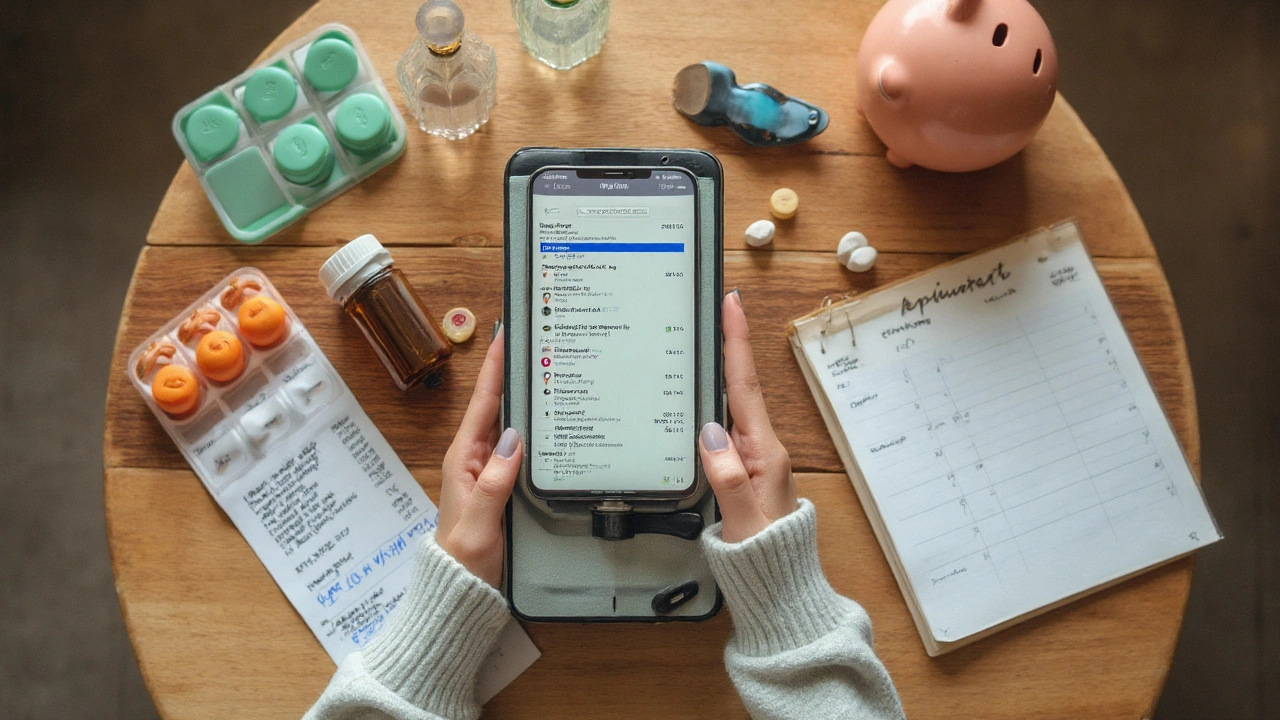
Risks, alternatives, and smart next steps
Duloxetine is widely used and effective for many people, but it’s not risk‑free. Know the big ones before you order.
Key safety points (from product labeling and major regulators):
- Boxed warning (antidepressants): increased risk of suicidal thoughts and behaviors in children, adolescents, and young adults. Monitor closely, especially in the first few weeks or after dose changes.
- Serotonin syndrome: risk goes up when combined with other serotonergic drugs (SSRIs/SNRIs, MAOIs, linezolid, methylene blue, triptans, tramadol, St. John’s wort, lithium). Seek urgent care if you notice agitation, confusion, heavy sweating, tremor, fever, or rapid heart rate.
- Liver injury: avoid in substantial alcohol use or chronic liver disease. Report dark urine, yellow skin/eyes, severe fatigue, or upper right abdominal pain.
- Blood pressure and heart rate: can increase. Check BP regularly, especially if you have hypertension.
- Hyponatremia/SIADH: more common in older adults or with diuretics. Watch for headache, confusion, weakness.
- Angle‑closure glaucoma: risk may rise; urgent eye pain or vision changes need prompt care.
- Renal considerations: severe kidney impairment may require caution or dose changes; your prescriber will advise.
- Pregnancy/breastfeeding: discuss benefits and risks with your clinician; don’t start or stop on your own.
- Stopping: do not stop abruptly. Taper over at least 1-2 weeks; many people need longer. Common withdrawal symptoms include dizziness, nausea, headache, irritability, and “brain zaps.”
Common side effects: nausea, dry mouth, constipation, loss of appetite, sleepiness or insomnia, sweating, dizziness, and sexual side effects. Most ease after a couple of weeks. Taking with food and starting at 30 mg can help tolerability.
Drug interaction quick list:
- Do not combine with MAOIs or within 14 days of stopping an MAOI.
- CYP1A2 interactions: inhibitors like fluvoxamine or ciprofloxacin can raise duloxetine levels; smoking can lower levels.
- Bleeding risk: higher with NSAIDs, aspirin, anticoagulants, or antiplatelets.
- Alcohol: increases liver risk; heavy use is a no‑go.
Alternatives if duloxetine isn’t ideal or is still pricey:
- Venlafaxine ER: another SNRI; cheap generic, strong for depression/anxiety. Can raise BP at higher doses.
- SSRIs: sertraline, escitalopram, fluoxetine-usually very low cost, well‑studied for mood/anxiety.
- Bupropion: lower sexual side effect burden; activating; not for anxiety‑dominant cases.
- For neuropathic pain/fibromyalgia: pregabalin, gabapentin, or low‑dose TCAs (amitriptyline, nortriptyline). Milnacipran is another SNRI used in fibromyalgia.
If price is still too high, try this checklist:
- Ask for a 90‑day fill by mail-usually cheaper per pill and fewer shipping fees.
- Price both 60 mg once daily and 30 mg twice daily; pick the cheaper path your prescriber approves.
- Use a different big‑box or warehouse pharmacy-pricing varies a lot.
- Check if your insurer covers mail‑order at a preferred rate.
- Ask the pharmacy to use a specific low‑cost manufacturer you’ve tolerated.
Mini‑FAQ
- Is duloxetine the same as Cymbalta? Yes. Cymbalta is the brand; duloxetine is the generic name. Approved generics must meet bioequivalence standards set by regulators like FDA/EMA.
- Do I need a prescription to buy it online? In most countries, yes. If a site says “no prescription needed,” it’s a major red flag.
- How fast does it work? Some feel better in 1-2 weeks; full effect can take 4-6+ weeks. Pain conditions may start easing within 1-2 weeks.
- Can I stop once I feel better? Not suddenly. Taper with your prescriber to avoid withdrawal symptoms.
- What if the package is late? Contact the pharmacy for tracking or a replacement. If you’re about to run out, ask your prescriber for a short local fill.
- Is generic less effective? No. Approved generics must match the brand on quality, strength, and performance within tight limits.
- Can I take it with alcohol? Light use is risky if you have liver concerns; heavy alcohol is unsafe with duloxetine.
- What should the capsules look like? Appearance varies by manufacturer. Match the imprint and color to the pharmacy’s description; when in doubt, call the pharmacist.
Next steps and troubleshooting
- If you don’t have a prescription: book a licensed telehealth visit through a reputable pharmacy platform. Bring a quick symptom timeline and current med list.
- If the cart total is higher than expected: try a 90‑day supply, switch to a different manufacturer, apply a coupon code, or price a different strength that meets the same daily dose.
- If side effects hit hard in week 1-2: take with food, consider morning vs evening dosing (ask your prescriber), or hold at 30 mg a bit longer before going to 60 mg.
- If you miss a dose: take it when you remember unless it’s close to the next dose. Don’t double up.
- If you need to stop: ask for a taper plan. Many people step down over 2-8 weeks to avoid withdrawal.
- If you’re considering an overseas pharmacy: confirm it’s licensed by that country’s regulator (e.g., CIPA in Canada), verify import rules for your country, and expect longer shipping times.
Safe buying recap: use a licensed pharmacy, compare the exact dose and quantity, don’t fall for no‑RX offers, and keep your prescriber in the loop. If duloxetine isn’t the right fit on cost or side effects, you’ve got solid alternatives-ask about venlafaxine, SSRIs, or pain‑focused options like pregabalin or a TCA. When in doubt, your pharmacist is a great ally for price and manufacturer questions.
Sources and credibility notes: Medical claims in this guide reflect approved product labeling and guidance from regulators: U.S. FDA (including BeSafeRx and the antidepressant boxed warning), EMA (EU), MHRA (U.K.), TGA (Australia), Health Canada, and the National Association of Boards of Pharmacy (NABP). For personal medical advice, talk to your licensed clinician.
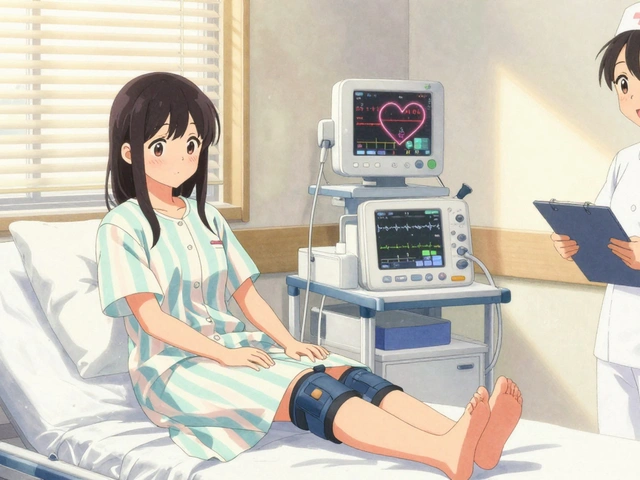


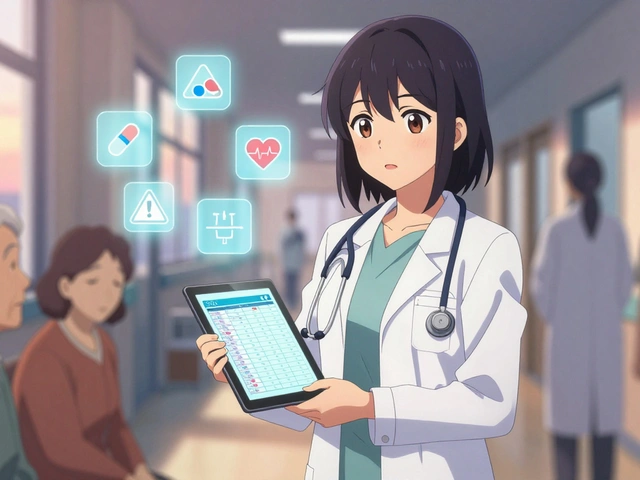
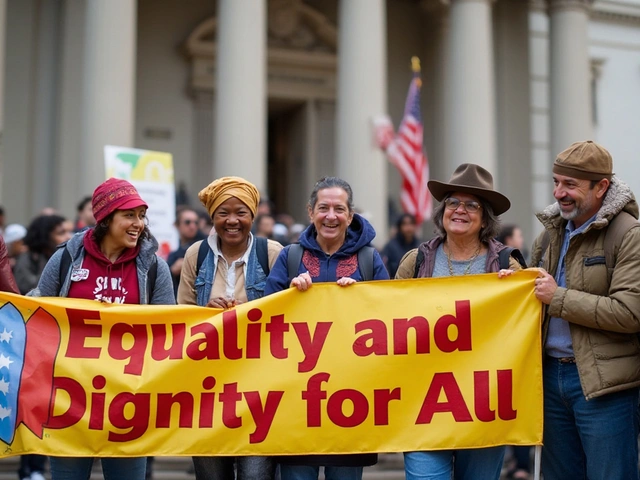
Comments (9)
Derek Dodge
Good practical checklist, caught the part about comparing exact dose and total cost which is the real money saver.
I usually run a quick price check between a big‑box mail order, a local chain, and a discount card site and pick the best combo of price and shipping time, then lock a 90‑day auto refill if it's stable.
Also keep a photo record of the lot number and packaging the first time a new manufacturer shows up, saved me a headache once when a pharmacy swapped brands without telling me.
AARON KEYS
Nice and clear tip on the 90 day refill, that cuts cost big time and thats what matters.
Also check for official seals like NABP .pharmacy or national regulator logos before giving your card
Trust local regulated pharmacies over no rx sites every time
Michelle Pellin
There are a few subtleties people miss when they try to pinch pennies on a medication that actually matters to their mood and function, and I want to make sure those are obvious up front.
First, the cheapest per‑pill option is not always the smartest if it means longer shipping or inconsistent manufacturer batches that your body then reacts to differently; that tiny cost saving can become a week of nausea and a ruined dose schedule, and then the whole benefit vanishes.
Second, telehealth is a legitimate route and often a bargain versus an urgent care copay, but you must pick services that explicitly link the consult to a pharmacy that verifies your script and shows licensure details on the same site - otherwise you lose the continuity of care.
Third, do not underestimate the advantage of a pharmacist you can call; when a generic brand changes its imprint or capsule color the pharmacist will flag it and explain whether the formulation is equivalent or if an alternative manufacturer might be better tolerated.
Fourth, monitor your blood pressure in the first few weeks if you have any history of hypertension - duloxetine can nudge BP up and that’s a simple thing to track at home with a cheap cuff.
Fifth, for people on blood thinners or regular NSAIDs be mindful of bleeding risk and get a heads up from the prescriber before starting; that conversation is short and it’s worth doing.
Sixth, if you travel or move between countries, carry the prescription and a printout of your regimen and lot number - customs or local pharmacists may ask, and having the documentation prevents sketchy purchases.
Seventh, when pricing compare two 30 mg to one 60 mg and the per mg math, then pick what your clinician approves - that tiny arithmetic often saves money but only if your prescriber signs off.
Eighth, take photos of the bottle and leaflet when it arrives and keep them in a folder with the pharmacy receipt; if anything looks wrong you’ll want timestamps and images for a swift replacement or report.
Ninth, tapering plans are personal and should be written down in the chart or on a secure note: “start 30 mg x7 days, then 60 mg” is not universal and should match your history and other meds.
Tenth, watch the SSRIs/SNRIs and MAOI interactions like a hawk and document any other serotonergic agents; a quick list on your fridge or phone note can avert a dangerous combo.
Eleventh, if cost is still an issue ask your prescriber for a temporary trial of a lower‑cost SSRI or bupropion depending on symptoms - many insurers have preferred lists that make those cheaper long term.
Twelfth, for people with liver disease or heavy alcohol use this drug is not the place to chase the cheapest pharmacy, focus first on safety and then on price.
Thirteenth, manufacturer consistency matters: if you tolerate one brand, ask the pharmacy to source the same manufacturer for future refills and add that note to your profile.
Fourteenth, keep a small emergency 7‑10 day local prescription as backup if you rely on mail order so you never get stuck during shipping delays.
Finally, document side effects and timing in a short daily note for the first month so when you talk to your clinician you can say exactly when things started and what changed, and that makes dose or product changes far less guessy.
Keiber Marquez
Buy from places that follow our regs not some foreign fly by night sellers
Domestic makers and verified pharmacy seals matter more than some 5 cent saving
Dont get rooked by weird cheap offers that ship from overseas
Monika Kosa
Always scan the barcode and save the courier tracking, they can be traced later and it helps if batches are suspect
Some packages have been intercepted or relabeled so its wise to inspect seals and compare imprints with an official database then report anything odd
Keep a small log of where each refill came from including country of origin, sometimes that shows a pattern and you can raise it with the regulator
Friendly tip, if a site pressures you to skip prescription checks thats a hard no, better safe than sorry
Gail Hooks
Noted 🙂
Summer Medina
Listen this is one of those things where you have to show up with facts and you have to be relentless about your own safety because the whole system is a messy beast and it will try to squeeze you for cash or attention and you will feel small if you let it
I have been on meds off and on for years and what I learned the hard way is that a sticker price is only the start you have to track the manufacturer the lot the leaflet the imprint and your symptom log and then you have to be ready to fight for the one that works for you which sounds dramatic but its real and its exhausting
When they switch manufacturers without telling you it can feel like a betrayal because your body remembers what worked and what didn’t and sometimes the pharmacist is clueless and acts like its not a big deal but it is a big deal to the person swallowing the capsule
Also the tapering bit is a battlefield and people underestimate how nasty withdrawal can be so get a taper plan in writing from a clinician and carry that plan like a shield
Dont buy the myth that cheaper always equals fine because sometimes the tiny savings are paid for in dizzy spells and lost days and those lost days add up
Use the coupon stacking they mention but do it with paperwork like receipts and screenshots and then when a problem appears you can show it and get a replacement or refund and move on
Keep a small emergency local fill at a community pharmacy so when shipping snarls you have a bridge dose so you dont miss and trigger withdrawal
And if you are caring for someone else check the capsule imprint every refill because family members are often the ones to notice a difference before the patient connects the dots
Lastly compassion for yourself, this is medicine not a commodity, treat it like the important thing it is and be prepared to advocate loud and steady for your continuity of care
Lily Saeli
Buying meds is a moral act now, it’s not just shopping it’s stewarding your body and the system that gives you care
When people chase the very cheapest option they sometimes forget the relational side of care the pharmacist who answers the call who will swap brands if you report side effects and who will flag interactions before they hurt you
Responsible buying means keeping your clinician in the loop even for price plays because they can suggest safe alternatives that insurers prefer and that keeps continuity
Also do the small civic duty of reporting suspicious sites to regulators so they can shut down dangerous sellers and protect others
Melissa Shore
Agree with the stewardship angle
I run a quick spreadsheet of prices and a notes column for manufacturer and shipping time which helps when comparing over months
For those with insurers, check the formulary and the mail order preferred list because that alone can knock a copay down substantially
When you change pharmacies, transfer your profile and notes about tolerated brands so the new pharmacy has your history
Keep a backup short fill locally for emergencies and add lot number photos to your phone